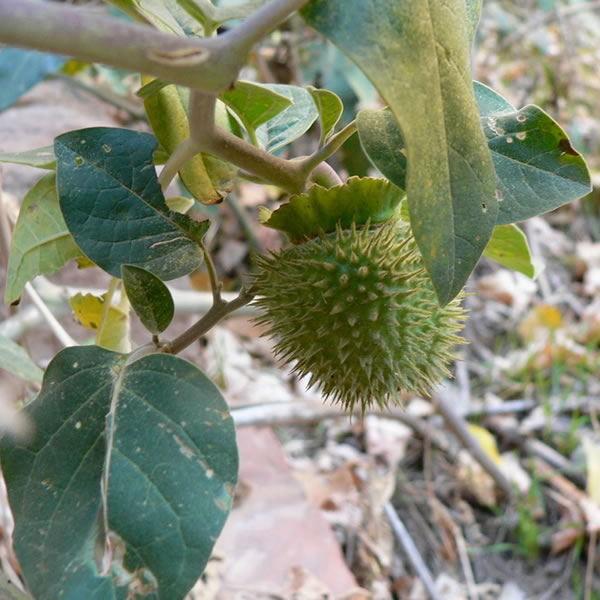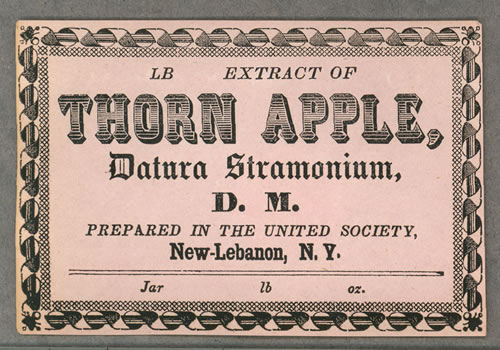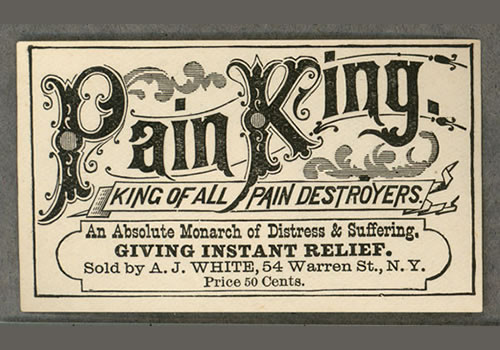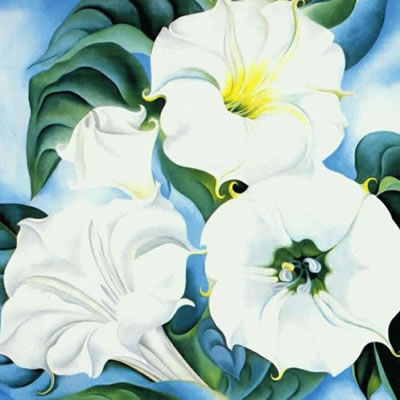The Powerful Solanaceae: Datura

Jimsonweed, Thornapple, Moonflower, and Sacred Daturas (Datura spp.)
“At the time of the White Dawn;
At the time of the White Dawn,
I arose and went away.
At Blue Nightfall I went away.I ate the thornapple leaves
And the leaves made me dizzy.
I drank thornapple flowers
And the drink made me stagger…”~Original Author Unkown
So begins the Pima “Datura Song” first translated in 1901 from a song-poem ritually performed by Tohono O’odham shamans of south-central Arizona and northern Sonora, Mexico. This song was sung to bring success with a hunt, but also in cases of sickness where the characteristic symptoms were vomiting and dizziness (Frank Russell, The Pima Indians, 1908). It illustrates the great significance and nature of datura plants in the oral and sacred traditions of many native cultures.
Datura species have been revered as sacred visionary plants among almost all cultures around the world that have encountered it. Archeological evidence shows that Datura has been in use for at least 3,000 years in the southwestern United States and even longer in other parts of the world.
 Sacred Datura (Datura wrightii) is also called moonflower, a reference to the fact that the flowers open late in the day. Hawkmoths are a primary pollinator. Photo: Teresa Prendusi.
Sacred Datura (Datura wrightii) is also called moonflower, a reference to the fact that the flowers open late in the day. Hawkmoths are a primary pollinator. Photo: Teresa Prendusi.
The genus Datura, with 9 to 12 known species, occurs widely throughout the temperate and warmer parts of both the Old and New World. The plants produce large white to purple tinged trumpet flowers and spiny round seedpods (thornapple). Daturas have been used as poisons, medicines, and ritual intoxicant agents since time immemorial. Each species has its own characteristic strong narcotic tropane alkaloids (typically scopolamine, atropine, daturine, and stramonine), which also make them among the most dangerous and poisonous plants known. Meteloidine is the principal hallucinogen, but it is only abundantly found in one of two species. Ingestion of even small quantities of any plant parts can cause delirium, frenzy, powerful hallucinations, coma, and death.
In the United States, the common name for the thornapple is Jimson weed, a contraction of Jamestown Weed. Robert Beverly in his book History and Present State of Virginia (1705), tells of an incident that occurred in colonial Jamestown to a group of unwitting soldiers who ate thorn apple leaves in a salad.
“Some of them eat plentifully of it, the Effect of which was a very pleasant Comedy; for they turn’d natural Fools upon it for several Days… A thousand such simple Tricks they play’d, and after Eleven Days, return’d to themselves again, not remembering anything that had pass’d.”
Jimsonweed is a major cause of accidental poisonings and death by those looking to get a cheap high.
Did You Know?
- Angel trumpets (Brugmansia spp.) are closely related to Daturas and are found in the Andean tropics of western South America. Highly toxic like their North American counterparts, these beautiful woody trees and shrubs are nevertheless popular ornamentals throughout the world.
- Some scholars believe that Delphic oracles in ancient Greece used Datura to induce their legendary visions.
- The Aztecs used Datura as a painkiller in initiation rituals and as a narcotic for ritual sacrifices.
- Datura has been used as an ingredient in the ritual practice of zombification in the Caribbean and is locally known as “Zombie-cucumber.”
- Until recently, Datura cigarettes were prescribed to asthma sufferers.
- Datura plants have been studied for their capacity to absorb heavy metals in bioremediation projects.
- Some Datura plants produce addictive narcotic nectar to entice hawk moths to their flowers.
- Browsing animals usually avoid eating the plants due to its foul odor and taste.
- The Chumash Indians of Southern California integrated Datura in their creation mythology. The old grandmother “Momoy” turned herself into the plant Datura after the great flood, which marked the transition between mythical times and the modern world.
- Georgia O’Keeffe often depicted Datura flowers in her world-famous paintings. She said, “when I think of the delicate fragrance of the flowers, I almost feel the coolness and sweetness of the evening.”
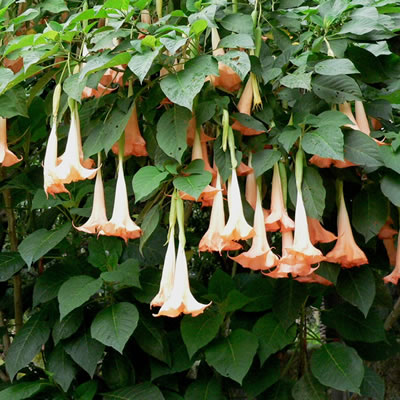 Brugmansia vesicolor is a long-lived Andean woody shrub or tree with large, pendulant flowers up to 10 inches long. It contains the same highly toxic tropane alkaloids found in Datura species.
Brugmansia vesicolor is a long-lived Andean woody shrub or tree with large, pendulant flowers up to 10 inches long. It contains the same highly toxic tropane alkaloids found in Datura species.


